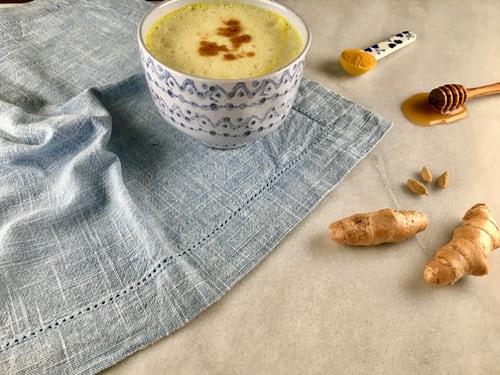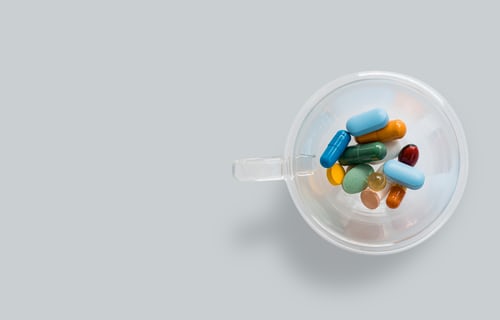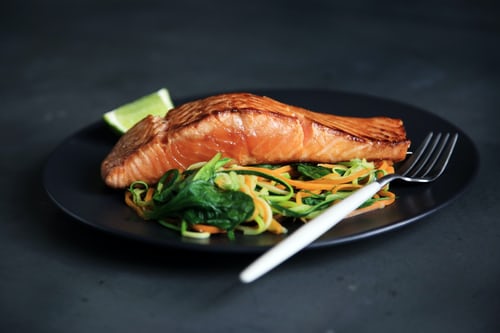Headaches happen.
It is a common condition that many people deal with on a daily basis.
Ranging from uncomfortable to downright unbearable, they can disrupt your day-to-day life.
Rather than reaching for over-the-counter painkillers, there are many natural remedies that people can try to help them get rid of a headache.
Try these tips and get to feeling better fast.
Drink water

Inadequate hydration may lead you to develop a headache.
In fact, studies have demonstrated that chronic dehydration is a common cause of tension headaches and migraines.
To help avoid dehydration headaches, focus on drinking enough water throughout the day and eating water-rich foods.
Mineral water and coconut water are great helps too.
They naturally cure dehydration and relieve headaches related to such.
They are natural sources of electrolytes, without the added sugar or artificial sweeteners that are found in many commercial electrolyte beverages.
Get some sleep

Sleep deprivation can be detrimental to your health in many ways.
Headaches are often a sign that your body needs a break.
Consider the tradeoff of spending 10 minutes to close the blinds, lie down, and relax when you feel a headache is forming.
If you can, try to sleep for an hour or so in a dark and well-ventilated room rather than fighting sleep and making things worse.
To get the maximum benefits, aim for seven to nine hours of sleep per night .
Use essential oils

Aromatherapy that uses some essential oils may also relieve symptoms of a headache.
Inhaling lavender essential oil for 15 minutes reduced the severity of headaches, according to one study.
A separate study suggested that peppermint oil is more effective at reducing tension headaches than a placebo.
The smells of essential oils may bother some people, and experimenting with different oils that individuals find relaxing may be a way to ease headache symptoms.
Cold compress

If you have a migraine, place a cold pack on your forehead.
Ice cubes wrapped in a towel, a bag of frozen peas, or even a cold shower may lessen the pain.
Keep the compress on your head for 15 minutes, and then take a break for another 15 minutes.
Warm compress
If you have a tension headache, place a heating pad on your neck or the back of your head.
If you have a sinus headache, hold a warm cloth to the area that hurts.
A warm shower might also do the trick.
Practice relaxation

Whether stretches, yoga, meditation, or progressive muscle relaxation, learning how to chill out when you’re in the middle of a headache can help with the pain.
One study investigated the effects of yoga therapy on 60 people with chronic migraines.
Headache frequency and intensity were reduced more in those receiving both yoga therapy and conventional care, compared to those receiving conventional care alone.
Another study found that people who practiced yoga for three months had a significant reduction in headache frequency, severity and associated symptoms, compared to those who did not practice yoga.
Release pressure on your scalp or head

If your ponytail is too tight, it could cause a headache.
These “external compression headaches” can also be brought on by wearing a hat, headband, or even swimming goggles that are too tight.
In one study, women who loosened their hair saw their headache disappear.
Massaging pressure points

Massaging certain pressure points may help relieve tension in the head and reduce a headache.
Many people do this instinctively, such as rubbing the back of the neck or pinching the top of the nose when they feel stressed.
There may be some truth to these instincts.
Many people find that massaging the temples, jaw, or neck may help relieve tension and reduce a tension headache that comes from being too stressed.
Some other areas to try massaging include the area between the eyebrows and the two spots at the base of the eyebrows on either side of the bridge of the nose.
These spots may hold tension from the eyes or head, and massaging them could help relieve this tension.
Massaging the neck near the base of the skull may also help release tension.
Get some caffeine

Have some tea, coffee, or something with a little caffeine in it.
If you get it early enough, it could ease your headache pain.
Just don’t drink too much because caffeine withdrawal can cause its own type of headache too.
Take some ginger tea

Ginger root contains many beneficial compounds, including antioxidants and anti-inflammatory substances
A small recent study found that taking ginger, in addition to regular, over-the-counter pain meds, eased pain for people in the ER with migraines.
Another found that it worked almost as well as prescription migraine medicines.
You can try a supplement or maybe brew some tea.
What’s more, ginger helps reduce nausea and vomiting, common symptoms associated with severe headaches
You can take ginger powder in capsule form or make a powerful tea with fresh ginger root.
Try vitamin B-complex

B vitamins are a group of water-soluble micronutrients that play many important roles in the body.
For example, they contribute to neurotransmitter synthesis and help turn food into energy.
Several studies have shown that the B vitamin supplements may reduce headache symptoms.
B-complex vitamins contain all eight of the B vitamins and are a safe, cost-effective way to naturally treat headaches.
B vitamins are considered safe to take on a regular basis, as they are water soluble and any excess will be flushed out through the urine.
Eat small, frequent meals

If you haven’t eaten anything in a while, that aching or fuzzy feeling may be a result of low blood sugar.
Experts advise to graze on small meals throughout the day, rather than three large ones at breakfast, lunch, and dinner.
This way your blood sugar stays more consistent and you won’t experience those types of crashes.
Some research suggests that foods rich in magnesium, such as spinach, tofu, olive oil, or sunflower or pumpkin seeds, may be especially helpful.
Disclaimer:
The content provided in this blog is for informational purposes only. The owner of this blog makes no representations as to the accuracy or the completeness of any information of this site or found by following any link on this site. The owner will not be liable for any errors or omissions in this information nor for the availability of this information. The owner will not be liable for any losses, injuries or any damages from the display or use of this information.



